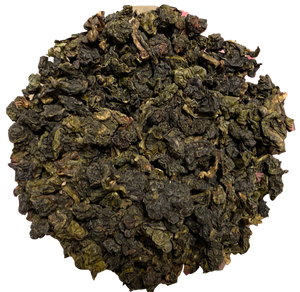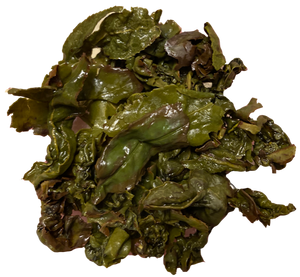Just below black tea, oolong tea is a semi to moderately oxidized tea that is produced through a process that causes the plant to wither under strong sun and air before the leaves are curled and twisted. Most oolong teas, especially those of fine quality, involve unique tea plant cultivars that are exclusively used for particular varieties. The degree of oxidation, which varies according to the chosen duration of time before firing, can range from 8 to 85%, depending on the variety and production style. Oolong is especially popular in south China and among Chinese populations throughout Southeast Asia.
Different styles of oolong tea can vary widely in flavor. They can be sweet and fruity with honey aromas, like our Teiguanyin, or woody with roasted aromas, like our Phoenix Oolong, or green and fresh with complex aromas, all depending on the horticulture and style of production. In two variations, some leaves are rolled into long curly leaves, while others are 'wrap-curled' into small beads, each with a tail.
The Chinese term wulong (oolong) was first used to describe a tea in the 1857 text Miscellaneous Notes on Fujian by Shi Hongbao. In Chinese, oolong teas are also known as qingcha (Chinese: pinyin: qīngchá) or "dark green teas".
The manufacture of oolong tea involves repeating stages to achieve the desired amount of bruising and browning of leaves. Withering, rolling, shaping, and firing are similar to black tea, but much more attention to timing and temperature is necessary.







